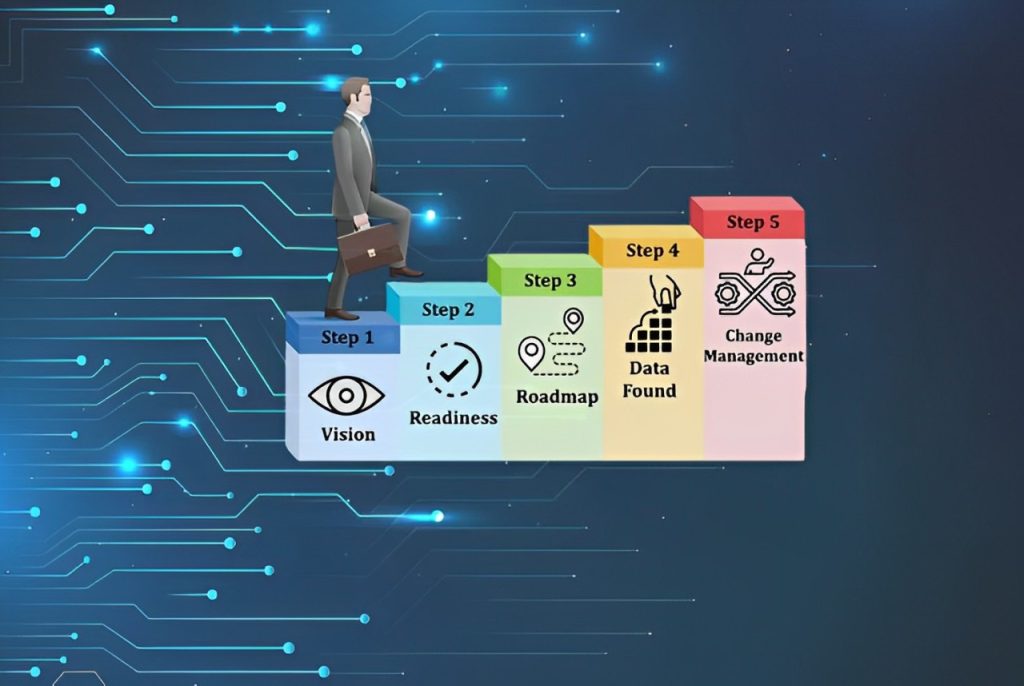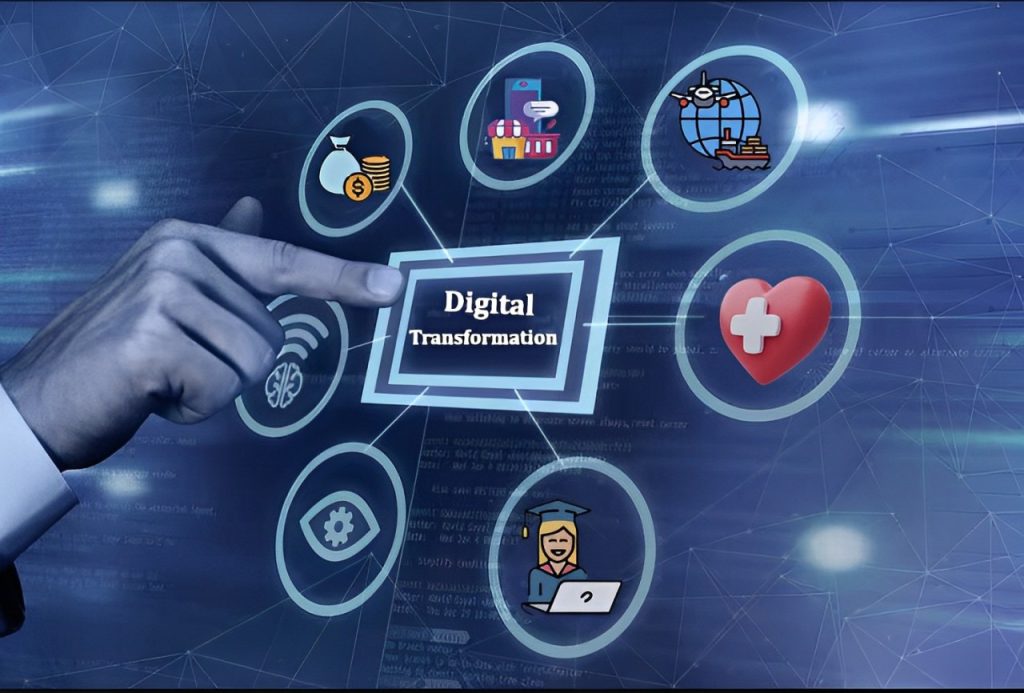What are the Pros and Cons of Digital Transformation?
To improve performance, digital transformation requires integrating modern computer technologies such as software, analytics, and the Internet into all elements of an organization’s operations.
Why do companies need digital transformation? Companies need digital transformation solutions to stay competitive in today’s rapidly evolving business landscape.
Companies go through digital transformation by replacing obsolete manual processes and technology with new digital solutions and methods of operation.
While becoming digital offers many potential benefits, there are significant challenges and risks.
Digital transformation risks and challenges are significant considerations for any organization embarking on a digital transformation journey.
Let us examine the key advantages and disadvantages.
Pros of Digital Transformation

Here are the pros of digital transformation
Increased efficiency and production
For example, software “bots” may quickly execute large amounts of data entry, calculations, formatting, and transaction processing with no human intervention.
This enables staff to be moved from tiresome administrative tasks to higher-value activities with greater strategic rewards.
Digital processes eliminate many inefficient activities like pushing paper files around, re-keying data across applications, and slow approval cycles by human errors and rework.
With connected systems, automated workflows, and real-time tracking, work gets done faster with fewer handoffs and delays between steps.
Overall, companies achieve significant productivity gains by automating manual toil and optimizing processes digitally. More output gets produced with the same (or even reduced) resources.
Better Data Collection and Analysis

In today’s economy, companies generate exponentially more data across all aspects of their operations compared to the past.
Digital systems capture and store reams of data from activities like sales, customer interactions, logistics, production, and more.
Cloud computing enables consolidating and integrating data collected across different sources into centralized data repositories and warehouses.
With all their data assets unified and connected, companies can fully analyze the information using cutting-edge business intelligence, visualization, and analytics tools.
Advanced analytics enable the discovery of useful insights into elements such as customer behavior, operational patterns, market trends, and so on.
Machine learning and big data processing techniques use predictive intelligence to steer strategies, optimize processes, and make data-driven decisions.
Companies relying solely on intuition miss out on these insights.
Enhanced customer experience
Another pro of digital transformation is enhanced customer experience.
Embracing digital transformation prepares businesses to fulfill these growing demands.
Companies that have a consolidated view of each customer’s interactions and journeys gathered across channels may optimize experiences and relevance at every touchpoint, from discovery to purchase, service, and retention.
Data analytics enables an understanding of individual client demands, behaviors, and preferences.
AI-powered chatbots, recommendation engines, and self-service portals offer tailored support around the clock.
Overall, digitalization decreases friction and increases convenience throughout the customer’s lifecycle.
Reduced expenses in the long run
While transformation requires significant initial investments, the long-term benefits include leaner ongoing operations and lower costs through:
- Automation of responsibilities and duties lowers labor costs.
- Increased productivity leads to increased output and throughput without requiring extra resources.
- Process efficiencies that reduce errors, rework, and other unnecessary chores.
- IT expense savings from the cloud, reduced infrastructure, and technical debt.
- Real estate optimization is made possible by remote labor and virtual engagement models.
The benefits gained through automation, modernization, and digitization compound over time, providing a substantial return on investment that pays for the initial implementation costs.
Boosted Flexibility and Quick Adaptation
For example, cloud technology lets them easily change how much computer power they use based on how busy they are.
Also, agile methods let teams work together closely, making and improving products quickly.
This flexibility helps businesses keep up with changes, grab new chances, and handle surprises well.
Plus, digital changes encourage new ideas and trying out new things.
This means employees feel comfortable with change, take smart risks, and come up with fresh ideas.
When a company is open to trying new things, it stays creative and can handle anything that comes its way.
Better Edge over Competitors
Digital changes help businesses use data smartly, getting useful insights and predictions to make better choices and understand what customers want and what’s happening in the market.
Above mentioned are the pros of digital transformation.
Cons of Digital Transformation

Below are the cons of digital transformation
Upfront Investment Costs
Significant upfront capital expenditures and resources are necessary for digital transformation, including:
- New enterprise software applications, analytics platforms, automation tools
- Cloud computing infrastructure service, storage, and platform costs
- Investing in modern IT infrastructure, computers, networking, devices
- Data center modernization for hybrid cloud models
- Complex projects to integrate new systems across the IT landscape
- Employee training and hiring new jobs, such as data scientists.
- Using external technological consulting services.
If initiatives go over budget or adoption slows, businesses may struggle to generate enough ROI to justify their large investments in the short term.
Digital transformation challenges to overcome include resistance to change among employees who may be hesitant to adopt new technologies and workflows.
Lack of Clear Plan
One big risk of digital transformation is not having a clear strategy. Some businesses dive in without a roadmap, like starting a trip without directions.
This can lead to confusion and wasted resources. Having a solid plan helps steer through challenges and stay on track.
Technical Debt Piling Up
Investing in new digital tech can create technical debt – the cost of ignoring necessary upgrades. It’s like skipping car maintenance – eventually, it breaks down.
Technical debt slows things down, increases errors, and blocks innovation. Fixing it means investing in upgrades and modernization.
Messing with Supply Chains
Digital transformations can disrupt supply networks, posing challenges for businesses and partners. It’s like rearranging a jigsaw; it takes time to find out.
This disruption causes delays, shortages, and increased expenses, reducing consumer happiness and profitability. These changes must be properly managed.
Handling Data is Tricky
Effective data management is critical, but it may be challenging. Data concerns such as silos or poor quality might result in poor decisions. Investing in solid data procedures is critical to success.
Digital transformation challenges to overcome also include the potential for job losses as tasks become automated, requiring companies to reskill and redeploy workers to emerging roles.
Cultural and Organizational Challenges
At its core, digital transformation represents a radical operational overhaul that impacts all facets of an organization’s processes, systems, roles, behaviors, and cultural norms. Managing this level of upheaval is extremely difficult.
Even with training, some employees will face steep learning curves adapting to new digital tools and workflows.
Resistance to change is inevitable, especially among tenured workers accustomed to legacy ways.
Companies must redesign decision rights, reporting structures, and governance models as traditional hierarchies break down.
Siloed departments transform into leaner, cross-functional product teams—operating models, accountability, and expectations all shift in the digitized environment.
Leadership must drive concentrated change management and cultural initiatives to accelerate adoption and reshape ingrained mindsets to embrace data-driven decision-making and innovation over institutional inertia.
Dependency on External Service Providers
External service providers are frequently used for technology deployment, support, and maintenance in digital transformation projects.
Outsourcing can offer expertise, scalability, and cost savings, but it also adds dependencies and hazards.
Businesses may encounter issues such as vendor lock-in, service outages, and restricted control over vital systems and data.
To guarantee alignment with corporate objectives and avoid potential drawbacks, it is necessary to carefully pick vendors, negotiate contracts, and manage them on an ongoing basis.
Rapid Technological Demise
Another risk of digital transformation is rapid technological demise.
The rapid rate of technological innovation means that digital solutions used today may become obsolete sooner than intended.
This fast obsolescence can result in large expenditures on outmoded technology that require periodic updates or replacements to remain competitive.
To remain ahead of the curve and future-proof digital investments, manage technology obsolescence through strategic planning, vendor relationships, and agile development methodologies.
Security and Data Privacy Risks

The connectedness and proliferation of digital systems in transformation also exponentially increase a company’s risk surface area for cyber threats.
As companies expand their digital footprints across the web, mobile, cloud, and IoT ecosystem, they create more vulnerability points.
Potential cyber-attack vectors span data breaches, malware/ransomware intrusions, phishing exploits, fraud, and even state-sponsored activities targeting critical operations.
Protecting customer data, intellectual property, and other vital assets is critical yet costly.
To minimize these dangers, strong security measures, clear policies, vigilant monitoring, and prepared incident response strategies are essential.
But security holes and breaches will persist as an ongoing threat.
Potential Job Losses
Perhaps the most concerning con of digital transformation is the potential to displace workers whose tasks and roles become obsolete or get automated by new technologies and systems.
Jobs in administrative work, accounting, customer service, research analysis, and manufacturing could be heavily impacted by automation, AI, and smarter software reducing manual labor needs.
While transformation creates new jobs in areas like data, automation engineering, cybersecurity, and digital marketing, existing employees may struggle with skillset transitions.
Companies must proactively reskill and redeploy workers to emerging roles where possible.
However, workforce reductions and outsourcing may still occur, which can damage morale, and brand reputation, and lead to public backlash if not handled sensitively.
Conclusion
While digital transformation offers exceptional opportunities around efficiency, intelligence, customer excellence, innovation, talent, sustainability, and long-term competitive advantages – it also presents extraordinarily difficult organizational, financial, security, and workforce challenges that can’t be underestimated.
But in today’s digital economy, the transformation from an industrial-age company into a cutting-edge, data-driven, cloud-first enterprise is increasingly essential to keeping up with agile disruptors and meeting customer demands.
When done right over time, the payoffs of digital transformation can position companies to be enduring innovation leaders rather than defensive technological laggards, perpetually playing catch-up.
What have been your organization’s biggest motivations for pursuing digital transformation thus far? Or what perceived roadblocks have hindered your progress? We would love to hear your experiences.
FAQs
1) How long does digital transformation take?
There is no set timeline as it’s an ongoing transformational journey rather than a one-off project.
Most companies take a phased approach over multiple years. A full-scale enterprise-wide transformation could take 3-5 years at a minimum.
2) What roles are needed to lead transformation?
Besides senior executive leadership and governance, critical roles include a transformation program manager, process owners, data/analytics experts, automation and AI leads, user experience designers, change management professionals, and technical/cloud architects.
3) How can companies make sure their technology matches what they need?
Companies make sure their technology matches what they need by talking a lot and working together. They make sure everyone understands what’s needed, so they pick the right technology.



